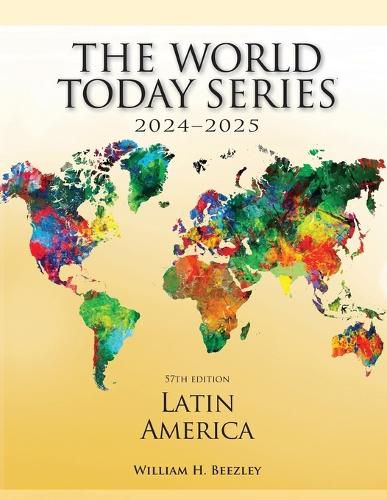Readings Newsletter
Become a Readings Member to make your shopping experience even easier.
Sign in or sign up for free!
You’re not far away from qualifying for FREE standard shipping within Australia
You’ve qualified for FREE standard shipping within Australia
The cart is loading…






The World Today Series: Latin America offers the latest available economic, demographic, political, and cultural information. Including solid statistical data expressing freedom, violence, and governmental orientation. Consideration is given to the evolving relationships with the United States and other Latin American nations. Revisions have also addressed new historical interpretations, for example, of the history of Mexico and latest political changes, for example, in Venezuela and Cuba. Maps, charts, and photographs provide extensive visual expressions of the region, its geography, peoples, and cultures, in particular public architecture, agricultural technology, specular geology, and striking diversity. The images offer a narrative of the multiplicity of peoples as demonstrated in their clothing, economic and everyday activities, their physical surroundings. Consequently, the narrative combines global economics, national politics, and daily social life throughout the region. The chapters can be read as individual histories for each of the countries, within the context created by contrasts and similarities with the other nations of Latin America.
$9.00 standard shipping within Australia
FREE standard shipping within Australia for orders over $100.00
Express & International shipping calculated at checkout
The World Today Series: Latin America offers the latest available economic, demographic, political, and cultural information. Including solid statistical data expressing freedom, violence, and governmental orientation. Consideration is given to the evolving relationships with the United States and other Latin American nations. Revisions have also addressed new historical interpretations, for example, of the history of Mexico and latest political changes, for example, in Venezuela and Cuba. Maps, charts, and photographs provide extensive visual expressions of the region, its geography, peoples, and cultures, in particular public architecture, agricultural technology, specular geology, and striking diversity. The images offer a narrative of the multiplicity of peoples as demonstrated in their clothing, economic and everyday activities, their physical surroundings. Consequently, the narrative combines global economics, national politics, and daily social life throughout the region. The chapters can be read as individual histories for each of the countries, within the context created by contrasts and similarities with the other nations of Latin America.